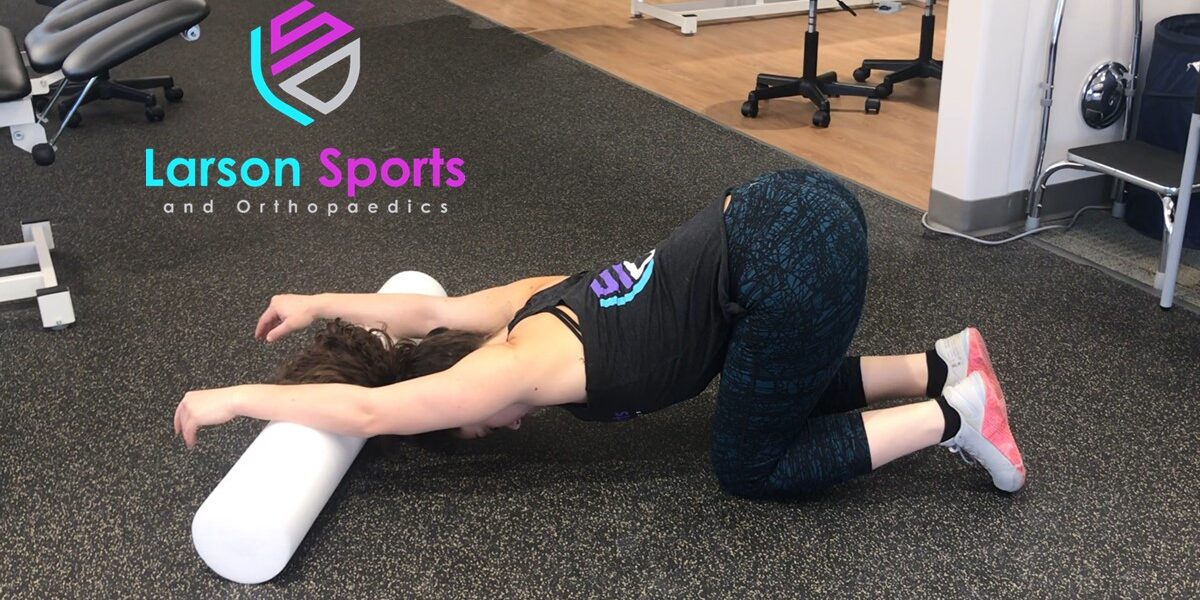In this article, I’m going to show you some stretches beyond all those ones you see on pop magazine websites. With our advanced guide to shoulder stretching we can help you nail those PR lifts. These shoulder stretches can improve your kipping pull-ups. They can help you finally get that overhead squat. And help you do it all while avoiding injury.
We aren’t trying to correct problems in this post, we are trying to prevent them. As an orthopedic surgeon who hits the gym for high-intensity weight training, I’ve seen how tight shoulders can lead to rotator cuff injuries and labrum tears. And I’ve seen how stiff shoulders can prevent you from achieving your fitness goals.
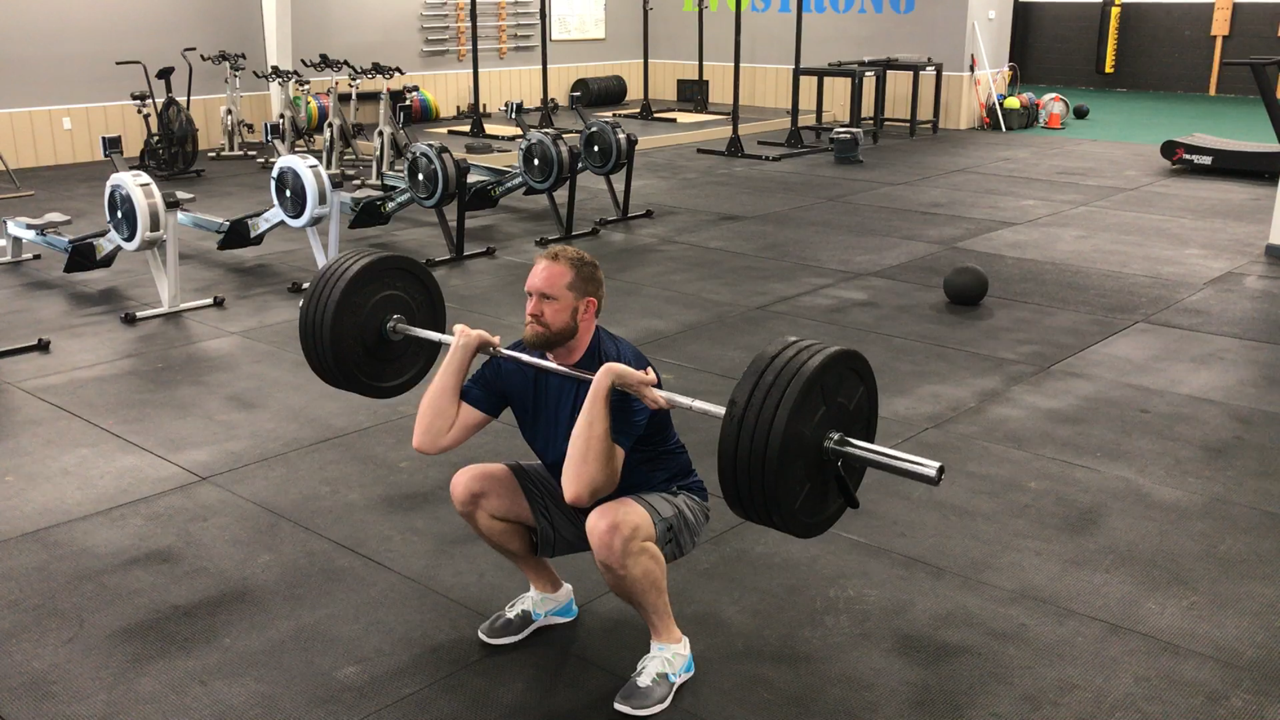
Dr. James Larson is an orthopedic surgeon specializing in sports medicine and arthroscopic surgery. He also holds a CF-L1 certificate and is a Certified BFR Specialist. He supports weight training and high-intensity exercise throughout the lifespan. He started LSO to keep more people moving better, longer.
You’ll notice that we don’t focus solely on the shoulder. That’s because shoulder mobility is complex and involves the spine, back, shoulder blades, chest, biceps, and triceps. So without further ado: Advanced Shoulder Stretching for Athletes.
For more information on how stretching the triceps, spine, and back can help with shoulder mobility, you can skip to the bottom of the post.

Doorway Stretch
The Doorway Stretch is one of the best ways to improve your flexibility in external rotation. I see so many people, even physical therapists, that neglect external rotation stretching. But if you don’t maximize external rotation, you’ll never achieve full overhead motion. The great thing about these is that they can be done against any stable object: lifting rig, wall corners, doorways, anywhere. So you can find to do this stretch nearly any time and any place. This will stretch the pecs and chest as well as the anterior shoulder capsule.
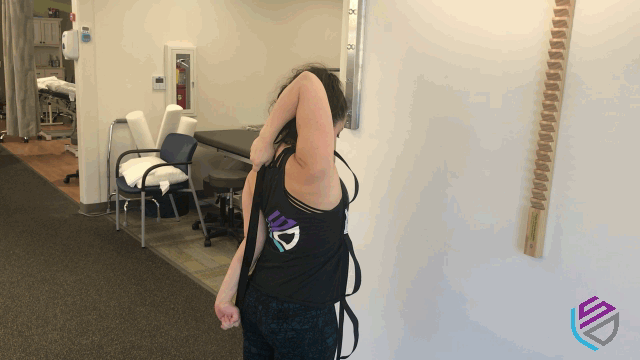
Behind-the-Back Stretch
While we use a similar stretch during rehab after surgery, you can really push it much farther. Using a yoga strap can help really work to the limits of mobility that athletes need to maximize function. You can work both directions here and work on scapula mobility, shoulder motion, and triceps stretch. This is a great way to move beyond the traditional “behind the head” triceps stretch.

Sleeper Stretch
The sleeper stretch is the go-to stretch for professional baseball. This stretch reduced the injury rates of high school and major league pitchers by a more than 50%. And I find it really helpful with functional fitness athletes too. Internal rotation is often forgotten, but you’ll never achieve maximum mobility without it. So be sure to work sleeper stretches and keep your motion balanced. This is a much better way to stretch the posterior shoulder than those basic, cross-body stretches.
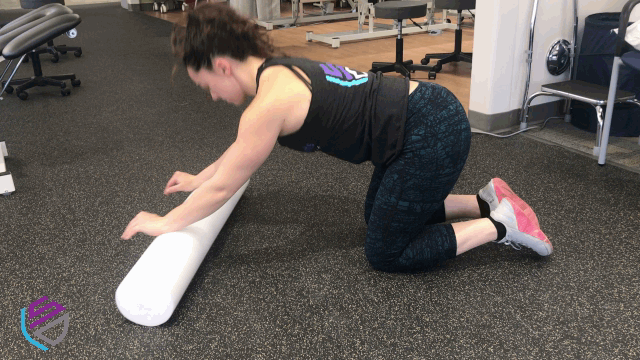
Child’s Pose with Roller
If you often drop snatches forward, it could be because you don’t have the mobility to catch the bar directly overhead. Adding a foam roller to Child’s Pose can help you stretch far enough for a proper catch. This stretch can also help push your shoulders far enough to properly kip. And that will help prevent rotator cuff injuries during pull-ups and toes-to-bar exercises as well.

Triceps Bench Stretch
People don’t realize that the triceps can limit your shoulder motion. Part of the triceps actually crosses the shoulder and attaches to the shoulder blade. If you don’t focus on stretching the triceps, it can really hold you back! This stretch puts the triceps on maximum stretch. And that will loosen the posterior shoulder for better overhead mobility.

Thoracic Teapots
Full overhead motion of the shoulder is not possible unless you have a flexible spine as well. The Child’s Pose stretch above does help to work on spine extension. But the spine is a complex series of joints. You can’t obtain maximum extension without unlocking the spine in all directions. These thoracic teapots allow you to use basic tenets of physical therapy and use lateral bending to release further rotational motion. They are a great way to improve overhead motion and reduce back pain.
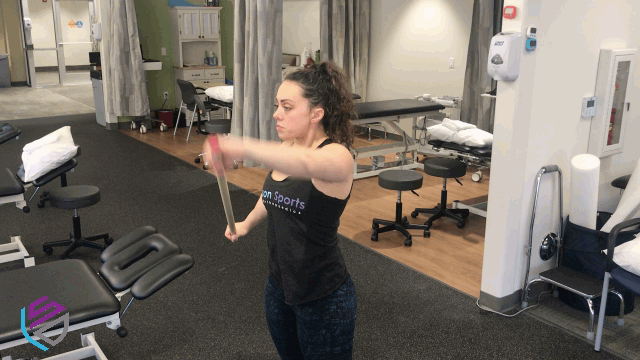
Around The World Stretch
The shoulder is a complex joint. And while it is possible to stretch specific directions, it is also important to work them all at once. These Around-The-World stretches can help with the dynamic mobility required for functional fitness training. It’s important to keep the elbows locked out to force the shoulder through it’s full range of motion.
Why Your Shoulders Get Stiff
Shoulders are one of the most mobile joints in the body. But over time, they begin to loose that flexibility. That comes from a combination of factors. Strength training naturally increases the stiffness of your muscles during the recovery process. So too much weight lifting without enough stretching can lead to stiff shoulders. Especially if your job doesn’t require much shoulder motion. So going from the gym to being hunched over a keyboard or steering wheel can easily lead to stiff shoulders. Shoulder stretching is the only way to counter this problem
How Spine Motion Alters Overhead Mobility
The shoulder joint is actually a complex of multiple joints, not just the glenohumeral joint. The shoulder also includes the acromioclavicular joint and the junction where the shoulder blades slide over the ribs. And while the shoulder blade can rotate on the ribs, it can’t be lifted away. So to attain maximum overhead motion, you have to add spine stretching, not just shoulder stretching.
Everyone has some amount curvature to the thoracic spine. This is called “kyphosis (ki-FO-sis)” and it determines the position of your shoulder blades. The more flexibility in your thoracic spine, the better you can move the shoulder blades back and away. And that clears the way for your arms to get overhead.
So if you want to maximize overhead mobility at the shoulder, you have to maximize mobility of your spine.
How Your Triceps Limits Your Shoulder Motion
The triceps muscles runs along the back of your arm. It’s main function is to straighten out your elbow when pushing something away from you. It had three different “heads” or main muscle bellies. Two of these attach to the back of the humerus, or upper arm bone. But the final head of the triceps actually crosses the shoulder joint and attaches to the shoulder blade itself.
This medial head of the triceps curves around the back of the shoulder and acts like a sling when you are reaching overhead. That helps to prevent the shoulder from dislocating when pushing heavy objects overhead. But if the triceps is too tight it can limit shoulder motion too much. So it is important to focus on stretching the triceps, especially because it can get quite tight with strength training.
Stretching vs Strengthening
Many people, even active athletes confuse stretching and strengthening. I see it all the time with people going through rehabilitation. So just a quick note of differentiation. Stretching involves forcing your body to push past the range of motion you currently have. Strengthening involves working against resistance. So if you are forcing your joints beyond their comfort zone, you are stretching. If you are using a dumbbell, stretchy band, or even just working your body weight against gravity, you are stretching.
Learning Anatomic Terminology
If you are confused by some of this terminology, don’t worry. It’s a whole new language for many people. But if you want to be as fit as possible, you need to learn that language. You can start by taking our Guide To Joint Motion course. It’s great for coaches and athletes alike, so we can all be on the same page.
Assess Your Functional Mobility
If you are looking for a great way to test your own mobility, or if you want to assess your clients functional motion, we’ve got a course for that. Our Functional Mobility Assessment is tailored specifically to the movements and motor patterns critical to high-intensity functional lifting.
This post contains affiliate links to Amazon. You don’t pay any extra, but we make a small (quite small) commission if you purchase. It helps to offset the cost of running this website.

